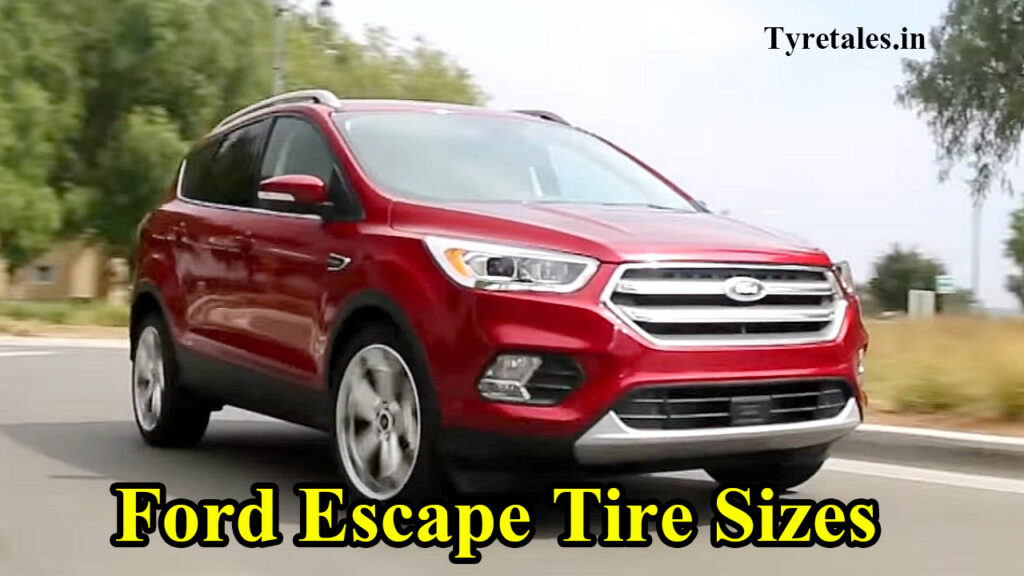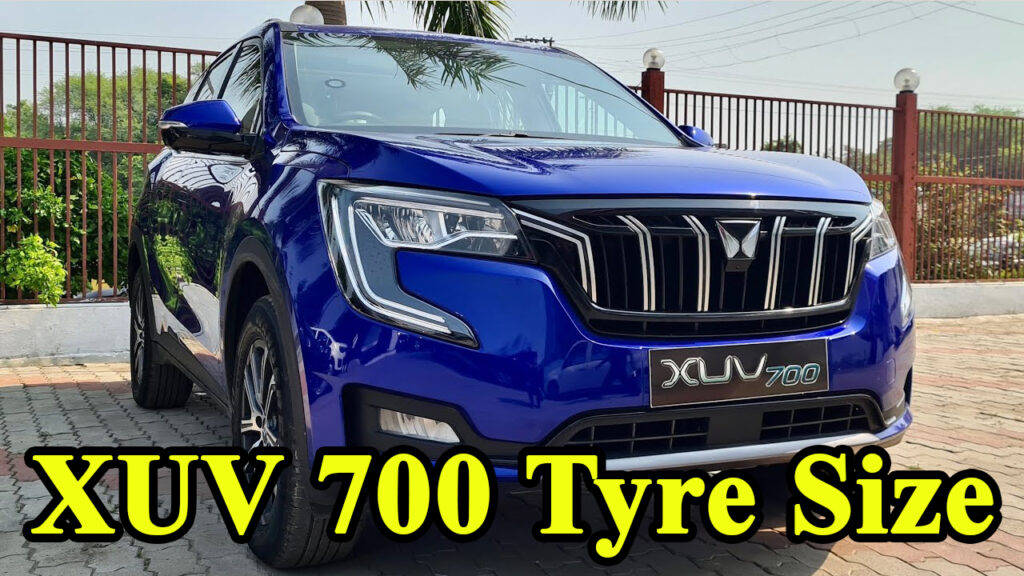The Ford Escape, a versatile compact SUV, has long been recognized globally for its blend of comfort, capability, and practical driving dynamics. For many, it serves as a reliable daily driver and a capable companion for weekend adventures. However, it is important to clarify that while Ford maintained a significant manufacturing presence in India for many years, the Ford Escape model itself was not officially sold or manufactured in the Indian market.1 Ford ceased its manufacturing operations in India in 2021, and although there were discussions about restarting vehicle production, those plans were subsequently put on hold.1 Therefore, this comprehensive guide serves as an invaluable resource for global Ford Escape owners, enthusiasts, or those who might consider importing such a vehicle.
Connecting any vehicle to the road are its tires—often overlooked, yet fundamentally critical components. These four patches of rubber are paramount for a vehicle’s safety, overall performance, and even its fuel efficiency. Choosing and maintaining the correct tire size extends far beyond simply fitting the wheel well; it directly influences handling, braking responsiveness, the accuracy of the speedometer, and the vehicle’s fuel economy.3 From a professional standpoint, observing vehicles firsthand, it is evident how using incorrect tires can compromise a vehicle’s structural integrity and jeopardize a driver’s safety. This in-depth article aims to demystify Ford Escape tire sizes across its various generations, explain the meaning behind the numbers and letters on the sidewall, guide selection for different driving styles, highlight the potential dangers of incorrect sizing, and provide essential maintenance practices for tire longevity and safety.
Decoding Tire Sizes: Understanding the Numbers and Letters
Every tire bears a unique code stamped on its sidewall—a series of numbers and letters that encapsulate its fundamental characteristics. Comprehending this code is essential for making informed tire selections. The tire size numbers and letters constitute a universal code, standardized by organizations such as the Tire and Rim Association and the European Tyre and Rim Technical Organization. This standardization means that the knowledge acquired about one vehicle’s tires is largely transferable to others, empowering consumers with a universal understanding and simplifying cross-referencing for future purchases or vehicle changes.
Consider a common tire designation, such as P225/65R17 102H. Each segment of this code provides vital information:
- P (Tire Type): This prefix, if present, indicates a “P-metric” tire, designed specifically for passenger vehicles, which includes cars, SUVs, and light trucks.6 Some Euro-metric tires may omit this initial letter but are generally interchangeable with P-metric tires.6
- 225 (Tire Width): This three-digit number represents the tire’s width in millimeters, measured from one sidewall to the other.6 A larger number signifies a wider tire.
- 65 (Aspect Ratio): This is a percentage that describes the tire’s sidewall height in relation to its width.6 In this example, the sidewall height is 65% of 225mm. A lower aspect ratio typically indicates a shorter sidewall, often associated with sportier vehicle setups.
- R (Construction Type): This letter denotes “Radial” construction, which is the most prevalent type of tire where the internal layers run radially across the tire.
- 17 (Rim Diameter): This number indicates the diameter of the wheel (rim) in inches that the tire is designed to fit.
- 102 (Load Index): This numerical code specifies the maximum weight capacity that a single tire can safely support when inflated to its recommended pressure.10 It is critical to ensure that any replacement tire has a load index equal to or greater than the vehicle manufacturer’s specification.
- H (Speed Rating): This alphabetical code signifies the maximum speed at which the tire can safely carry its maximum load under optimal conditions.10 For instance, an ‘H’ rating typically indicates a maximum speed of 130 mph (210 km/h).11
Understanding these details is paramount for selecting tires that meet the Ford Escape’s structural and performance requirements, thereby preventing potential safety hazards and premature tire wear.
Understanding Your Tire’s Sidewall: A Quick Guide
| Label Component | Example (e.g., P225/65R17 102H) | Meaning |
| Tire Type | P | Passenger Vehicle |
| Tire Width | 225 | Width in millimeters |
| Aspect Ratio | 65 | Sidewall height as % of width |
| Construction Type | R | Radial |
| Rim Diameter | 17 | Wheel diameter in inches |
| Load Index | 102 | Maximum load capacity per tire |
| Speed Rating | H | Maximum speed capability |
Ford Escape Tire Sizes Across Generations
The Ford Escape has undergone significant transformations across its four generations. With each evolution, its tire sizes have adapted to align with changes in design, performance characteristics, and evolving consumer preferences. A clear trend of increasing wheel diameters and decreasing aspect ratios is observable across the Ford Escape generations. This trend reflects a broader automotive industry shift towards sportier aesthetics, improved on-road handling, and the accommodation of larger brake calipers. This often comes with trade-offs, such as a firmer ride due to less sidewall cushioning and potentially higher tire replacement costs.
Nail in Your Tire, But Not Flat? Here’s What One Must Do (And Why It’s Dangerous to Wait)
A. First Generation (2001-2007): The Foundation
The original Ford Escape models typically featured smaller rim diameters, prioritizing ride comfort and general practicality. Common original equipment (OE) sizes included 235/70R16 for trims like the XLT 4-wheel drive, and 225/70R15 for XLS and XLT 2-wheel drive variants. These early models could accommodate both 15-inch and 16-inch tires.
B. Second Generation (2008-2012): Evolution and Options
This generation saw a subtle shift, with some models incorporating slightly larger diameters. Common OE sizes included 235/70R16 for Hybrid, Limited, XLS, and XLT trims, and 225/65R17 for Limited, Limited XLT, and XLT with Sport Appearance Package models. Interestingly, some owners of 2008-2012 Escapes successfully fitted larger tires, such as 245/70R17, without experiencing rubbing issues, even at full steering lock, and reported increased ground clearance. This demonstrates the potential for aftermarket modifications, though such changes always warrant careful consideration of their broader implications.
C. Third Generation (2013-2019): Modernizing the Ride
The third generation introduced a more car-like design, and the tire sizes reflected a growing trend towards larger wheels and lower profiles. This was aimed at enhancing handling and achieving a more contemporary aesthetic. Common OE sizes included 235/55R17 for S and SE trims, 235/50R18 for SE and SEL trims, and 235/45R19 for the Titanium trim. The 2013 Escape specifically offered 17-inch, 18-inch, and 19-inch options.
D. Fourth Generation (2020-Present): The Latest Iteration
The current generation continues the trend of larger wheel options, often paired with lower aspect ratios to achieve a modern, sporty appearance and a more direct road feel. Common OE sizes include 225/65R17 for trims like the Active, 225/60R18 for the ST-Line, and 225/55R19 for Platinum and Titanium Plug-In Hybrid trims.15 Some top-tier trims may even offer 245/45R20.
It is crucial to understand the nuances of inter-year compatibility. While certain rims might be compatible across different model years (e.g., 2018 rims on a 2024 Escape due to similar bolt patterns and center bores), the tire sizes themselves can differ significantly in overall height. For example, 2018 Escape SE 235/55R17 tires were approximately 20mm (almost an inch) smaller in diameter than 2024 Escape Active 225/65R17 tires. This difference led to speedometer inaccuracies, with the speedometer reading 75 mph when the actual speed was 70 mph. This highlights the critical necessity of matching the overall tire diameter, not merely the rim size, to maintain vehicle calibration.
Trim-specific tire sizes are often chosen to align with the trim’s intended performance, comfort, or aesthetic profile. For instance, a base trim might prioritize ride comfort and cost-effectiveness with a smaller wheel and higher aspect ratio, while a “sport” or “platinum” trim aims for a more aggressive appearance and sharper handling with a larger wheel and lower aspect ratio. This means that a “one-size-fits-all” approach to tire replacement is inappropriate. Relying solely on the model year without considering the specific trim can lead to suboptimal or even unsafe choices. Therefore, owners should always consult their vehicle’s door jamb sticker or owner’s manual for the precise OE size for their specific vehicle.
Toyota Glanza Prestige Edition Tyres: Best Brands, Sizes & Price in India
Ford Escape Standard Tire Sizes by Generation & Common Trims
| Generation | Model Years | Common Trims | Standard OE Tire Sizes |
| 1st Gen | 2001-2007 | XLS, XLT | 225/70R15, 235/70R16 |
| 2nd Gen | 2008-2012 | Hybrid, Limited, XLS, XLT | 235/70R16, 225/65R17 |
| 3rd Gen | 2013-2019 | S, SE, SEL, Titanium | 235/55R17, 235/50R18, 235/45R19 |
| 4th Gen | 2020-Present | Active, ST-Line, Platinum, PHEV | 225/65R17, 225/60R18, 225/55R19, 245/45R20 |
Choosing the Right Tires for Your Ford Escape
Beyond simply knowing the vehicle’s original equipment (OE) size, selecting the appropriate type of tire is crucial for optimizing the Ford Escape’s performance under specific driving conditions. There is a clear trade-off between performance, comfort, and fuel efficiency when selecting different tire types and sizes. This means the “best” tire for a Ford Escape is highly subjective and depends entirely on the individual driver’s priorities and typical use case, necessitating a personalized approach rather than a universal recommendation.
A. Beyond OE: Understanding Tire Types
While adhering to OE sizes is generally advisable for optimal fit and performance 15, the aftermarket offers a wide variety of options:
- All-Season Tires: These are the most common choice, engineered for year-round performance in diverse conditions, including light snow. Popular options like Michelin Defender 2 and Goodyear Assurance MaxLife are recognized for their durability and reliable all-season grip.
- All-Weather Tires: Representing an advancement over traditional all-season tires, these offer superior performance in colder temperatures and more significant snow, often identified by the “three-peak mountain snowflake” (3PMSF) symbol. Michelin CrossClimate2 and Pirelli Cinturato WeatherActive are noted as top performers in this category.
- Highway Terrain (H/T) Tires: Often standard on SUVs, H/T tires are optimized for highway driving, providing a smooth, quiet ride and good performance in dry and wet conditions. They are not designed for extreme winter conditions or prolonged off-road use.
- All-Terrain (A/T) Tires: For drivers who occasionally venture off-road or encounter more challenging winter conditions, A/T tires feature deeper tread designs for enhanced traction in mud, snow, and gravel.33 However, they may produce slightly more road noise compared to H/T tires.
- Winter (Snow) Tires: These tires are specifically engineered for severe winter conditions, offering superior grip on ice and snow through specialized rubber compounds and unique tread patterns.
B. The Science of Tread Patterns
The arrangement of grooves and blocks on a tire’s surface, known as the tread pattern, significantly impacts its performance. Tire tread patterns are specifically engineered for different performance characteristics, such as efficient water displacement, superior dry grip, or reduced road noise.35 Understanding these patterns allows drivers to select tires optimized for their most common driving conditions, thereby enhancing safety and performance beyond merely matching the size.
- Symmetrical Tread: This pattern features a consistent design across the entire tire. Symmetrical treads are versatile, allow for flexible rotation patterns (front-to-back, side-to-side), are generally fuel-efficient, and provide consistent traction on dry roads. They are ideal for daily driving.
- Directional (Unidirectional) Tread: Characterized by V-shaped patterns designed to roll in only one specific direction. Their outward-facing grooves excel at displacing water, effectively reducing the risk of hydroplaning, and offering increased traction in muddy or snowy conditions. However, their rotation is limited, typically only front-to-back on the same side, or requiring dismounting and remounting to switch sides.
- Asymmetrical Tread: This design combines different patterns across the tire face. The inner portion often focuses on water displacement, while the outer part features sturdy blocks for enhanced cornering stability and dry grip. These treads also contribute to reducing road noise. Similar to directional tires, their rotation patterns are specific.
C. Key Considerations for Driving Needs
- Climate & Driving Conditions: The local weather patterns (e.g., heavy snowfall, frequent rain, extreme heat) and typical driving environment (city commutes, highway travel, unpaved roads) should heavily influence tire selection.
- Performance vs. Comfort: Larger wheel sizes and lower profile tires (e.g., 245/45R20) may offer sharper handling and a more aggressive appearance, but they often result in a firmer, less comfortable ride compared to smaller wheels with taller sidewalls (e.g., 225/65R17).
- Fuel Efficiency: Wider and heavier tires generally increase rolling resistance and wind resistance, leading to reduced fuel efficiency. Conversely, narrower tires can contribute to improved fuel economy.
The Hidden Dangers of Incorrect Tire Sizes
While the prospect of customizing a Ford Escape with different tire sizes might be appealing for aesthetic reasons or perceived performance enhancements, deviating from manufacturer specifications without a comprehensive understanding can lead to significant problems. Such alterations can compromise safety, diminish performance, and even shorten the lifespan of various vehicle components. The impact of incorrect tire size extends far beyond merely “fitting” the wheel well; it affects multiple critical vehicle systems. What might seem like a simple aesthetic or minor performance upgrade, such as wider tires, can trigger a cascade of negative consequences, leading to reduced safety, higher operating costs (fuel, repairs), and a diminished driving experience.
A. Speedometer and Odometer Inaccuracy
A vehicle’s speedometer and odometer are precisely calibrated based on the original equipment (OE) tire’s rolling diameter. Changing to tires with a different overall diameter will disrupt these readings. A real-world example illustrates this: a 2018 Escape fitted with 235/55R17 tires (which have a smaller diameter) on a 2024 Escape designed for 225/65R17 tires (which are taller) caused the speedometer to read 75 mph when the actual speed was 70 mph.25 This discrepancy can lead to speeding violations, inaccurate mileage tracking, and misjudgments of stopping distances.
B. Reduced Fuel Efficiency
Larger and wider tires typically have a greater contact patch with the road, which increases rolling resistance. This necessitates the engine to work harder to propel the vehicle, resulting in increased fuel consumption. Furthermore, heavier tires demand more energy from the engine for acceleration, further reducing miles per gallon (MPG), especially in stop-and-go city driving. A forum discussion highlighted this issue, noting a “drastic drop in MPG” after switching to wider, heavier tires, with the MPG returning to original levels upon reverting to OE size.
C. Compromised Handling, Braking, and Safety
Incorrect tire sizes can alter a vehicle’s center of gravity, affecting stability and potentially making it more prone to body roll. Larger or heavier tires increase rotational mass, demanding more force to bring the vehicle to a halt, which can result in longer braking distances and reduced overall braking effectiveness. The braking system relies on the correct tire size to provide appropriate force and traction. Moreover, modern vehicles depend on precise tire measurements for advanced safety systems such as Anti-lock Braking Systems (ABS), Traction Control, and Stability Control; altering tire size can negatively impact their intended functionality.
D. Potential for Mechanical Strain and Premature Wear
Tires that are excessively wide or tall can rub against fender liners, suspension components (such as struts and springs), or even critical electrical and fuel lines, leading to damage ranging from minor cosmetic issues to significant structural compromise. An increase in tire size can also cause accelerated wear on drivetrain components, including the transmission, axles, CV joints, and differential. This occurs because the engine must work harder to compensate for the decreased mechanical advantage, potentially leading to costly repairs over time. Furthermore, regular contact or improper fitment can result in irregular tire wear, significantly shortening the tire’s lifespan. Real-world experiences from vehicle owners, as documented in various forums, consistently corroborate these technical explanations regarding the negative impacts of incorrect tire sizing. Integrating these anecdotal experiences from actual vehicle owners significantly enhances the article’s credibility and relatability, validating the technical information with practical evidence.
Essential Tire Maintenance for Longevity and Safety
Choosing the right tires is merely the initial step; proper maintenance is fundamental to maximizing their lifespan, ensuring optimal performance, and maintaining vehicle safety on the road. Tire maintenance (proper pressure, regular rotation, correct alignment, and balancing) is not a series of isolated tasks but an interconnected system, impacting various aspects of vehicle performance and longevity. Proactive tire maintenance represents a cost-effective strategy that prevents more expensive repairs in the long run, enhances overall safety, and significantly improves the driving experience.
A. Tire Pressure: Your First Line of Defense
Correct tire pressure, ideally measured when tires are cold, is paramount for optimal performance, safety, and fuel efficiency. Under-inflated tires can lead to poor handling, increased rolling resistance (and consequently lower MPG), and premature wear. Tire pressure can be manually checked using a tire pressure gauge. The recommended pressure (in psi or kPa) is typically found on a sticker located inside the driver’s side door jamb. Many modern Ford Escapes are equipped with a Tire Pressure Monitoring System (TPMS) that alerts the driver to low pressure, with some even displaying individual tire pressures directly on the dashboard.
B. Tire Rotation: Even Wear, Longer Life
Tires wear differently depending on their position on the vehicle; for instance, front tires on front-wheel-drive (FWD) vehicles typically wear faster due to their roles in steering, braking, and power application. Regular tire rotation promotes even tread wear, thereby extending tire life and ensuring consistent handling characteristics. For most Ford Escapes, rotation is recommended every 5,000 to 7,500 miles. For All-Wheel-Drive (AWD) models, which exert more intensive contact with the road, a shorter interval of 3,000 to 5,000 miles is often advised. It is always best to consult the owner’s manual for specific rotation intervals.41 The ideal rotation pattern depends on the Escape’s drivetrain (FWD, RWD, or AWD) and whether the tires are directional. For FWD vehicles, a common pattern involves moving front tires straight back and crossing the rear tires to the front.
C. Wheel Alignment and Balancing: Smooth and Stable
Wheel Alignment ensures that the tires make contact with the road surface at the correct angle.43 Misalignment, often a result of impacts from potholes or minor collisions, leads to uneven and rapid tire wear, reduced fuel efficiency (due to increased rolling resistance), and the vehicle pulling to one side.
Wheel Balancing ensures that the weight of the wheel and tire assembly is evenly distributed around the axle.43 Imbalanced wheels can cause vibrations, uneven tire wear, and potentially strain the suspension and bearings.43 Balancing should be performed every time new tires are installed and checked periodically thereafter.
D. When to Say Goodbye: Recognizing Tire Wear
Regular inspection of tires for signs of wear is crucial. This includes checking for low tread depth (using the built-in tread wear indicators), cracks in the sidewall, bulges, or punctures. Tires should generally be replaced when significant signs of wear appear, and regardless of mileage, they should not be used for longer than six years.
Conclusion: Drive Confidently with the Right Tires
The tires on a Ford Escape are much more than mere rubber circles; they are fundamental to its safety, performance, and efficiency. From deciphering the cryptic codes on their sidewalls to selecting the appropriate type for specific driving habits, every decision regarding tires holds significant weight.
This guide has explored the generational evolution of Ford Escape tire sizes, clarified the meaning behind the numbers and letters on the sidewall, navigated the various tire types and tread patterns, and underscored the critical dangers associated with choosing incorrect sizes. Additionally, it has covered the non-negotiable aspects of tire maintenance: proper inflation, regular rotation, and essential alignment and balancing.
From a professional perspective, the profound difference a well-maintained set of correctly sized tires makes is consistently evident. It is not merely about preventing breakdowns; it is about experiencing a smoother, safer, and more economical ride. Taking the time to understand the Escape’s tire requirements, investing in quality replacements, and committing to regular maintenance are investments that pay dividends. With the right tires and diligent care, a Ford Escape will reliably and confidently transport its occupants for many miles to come.




